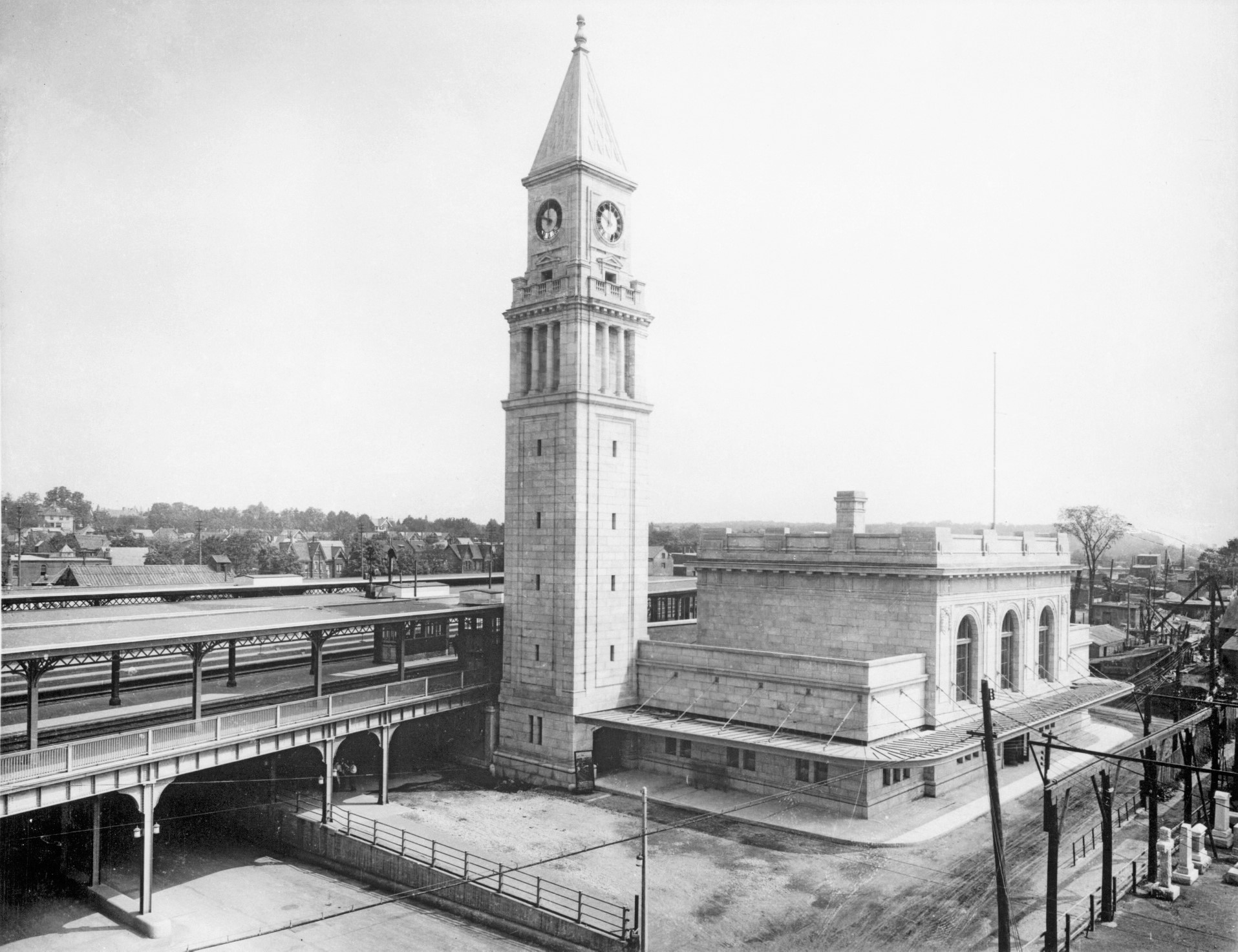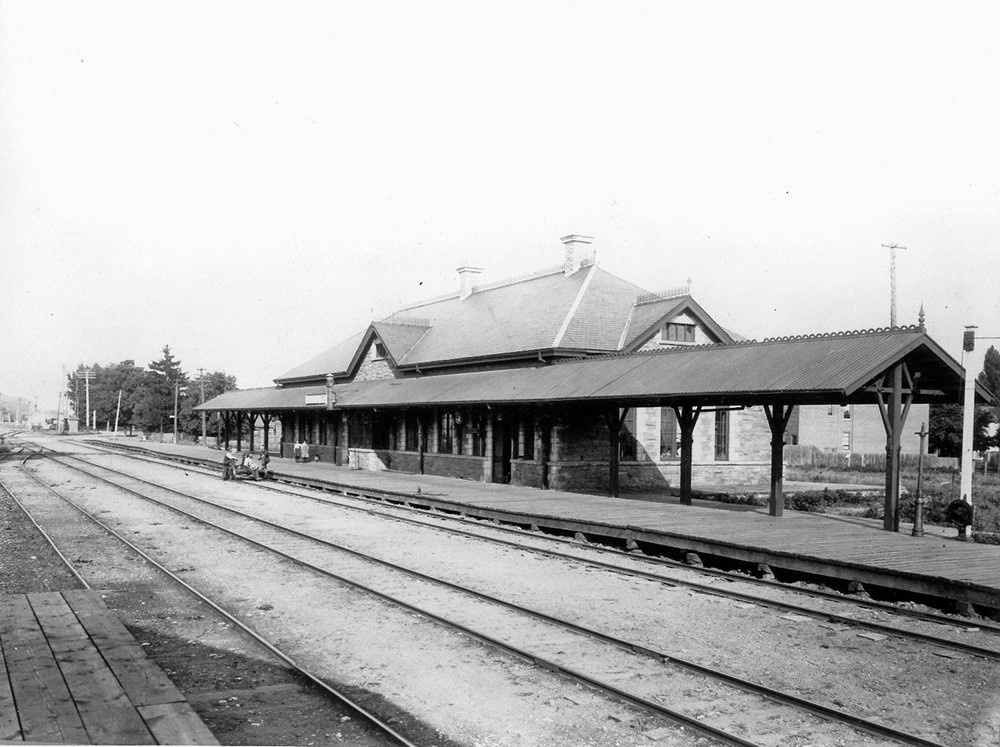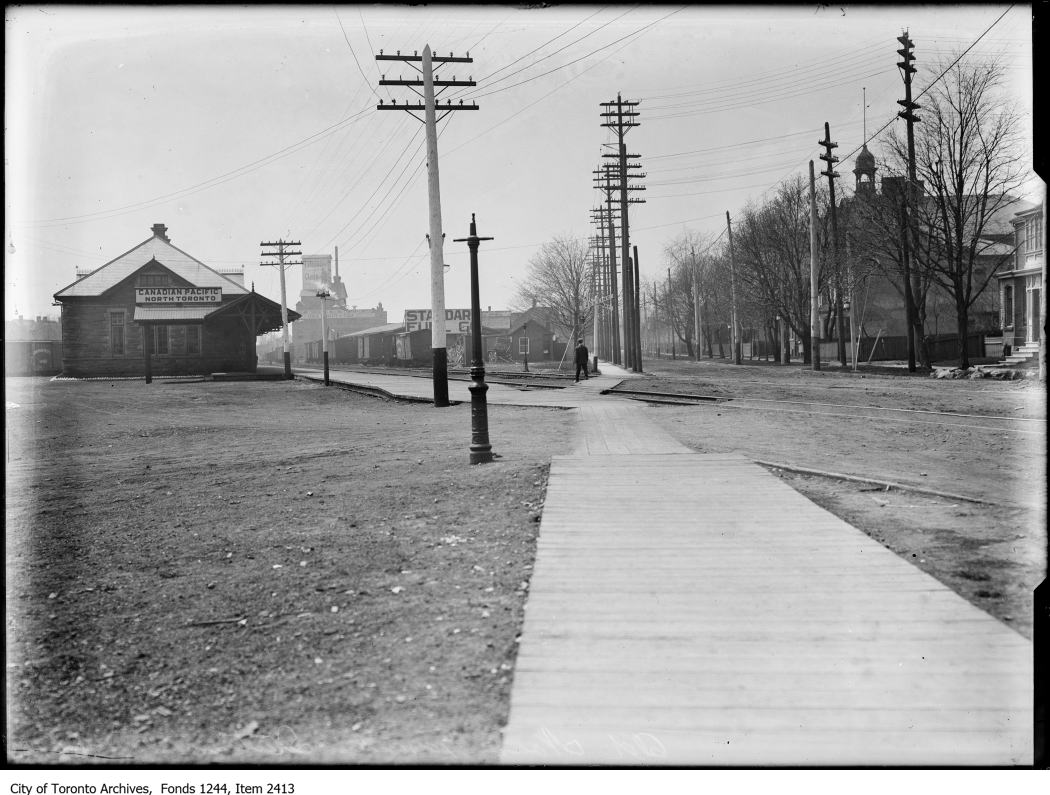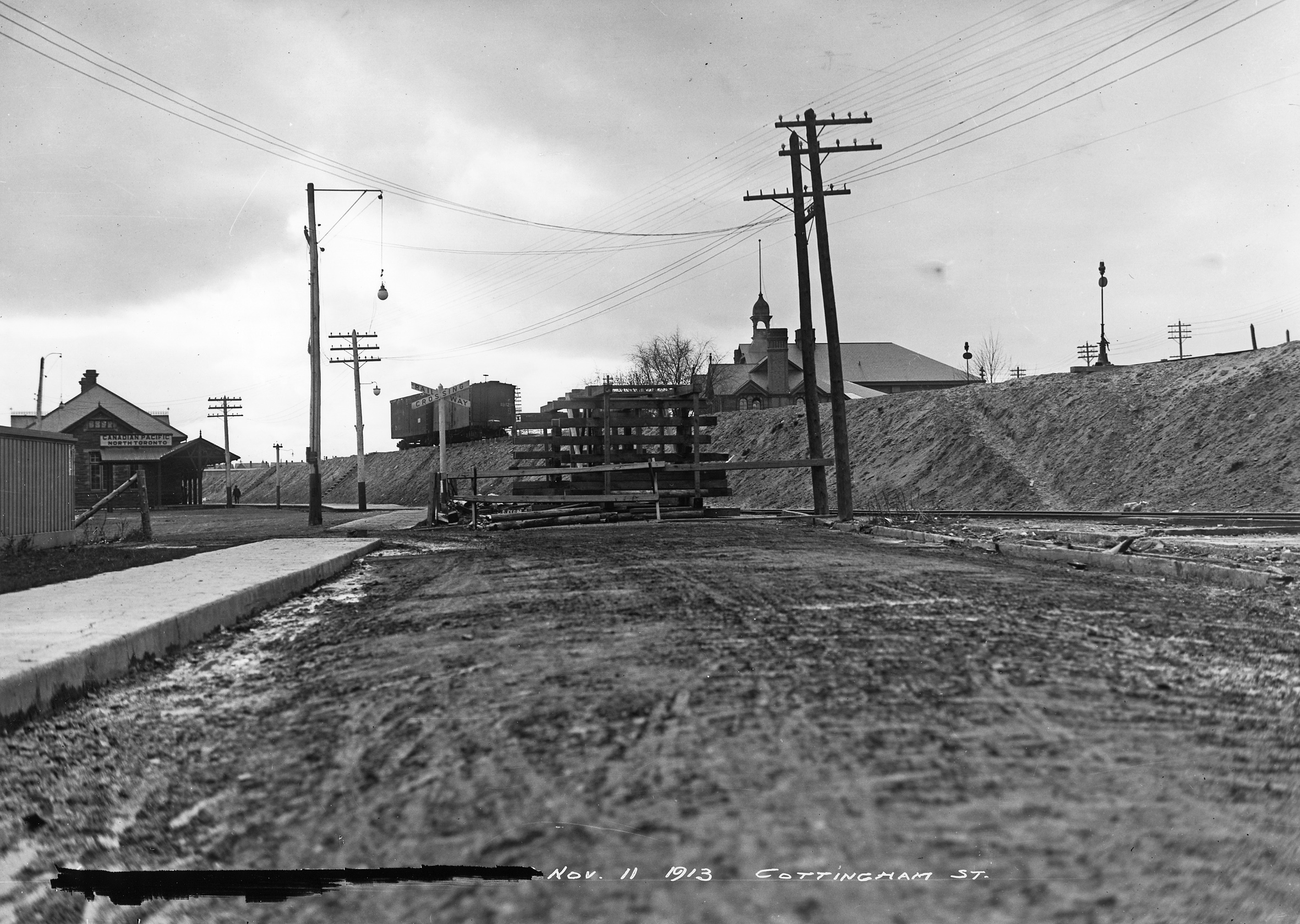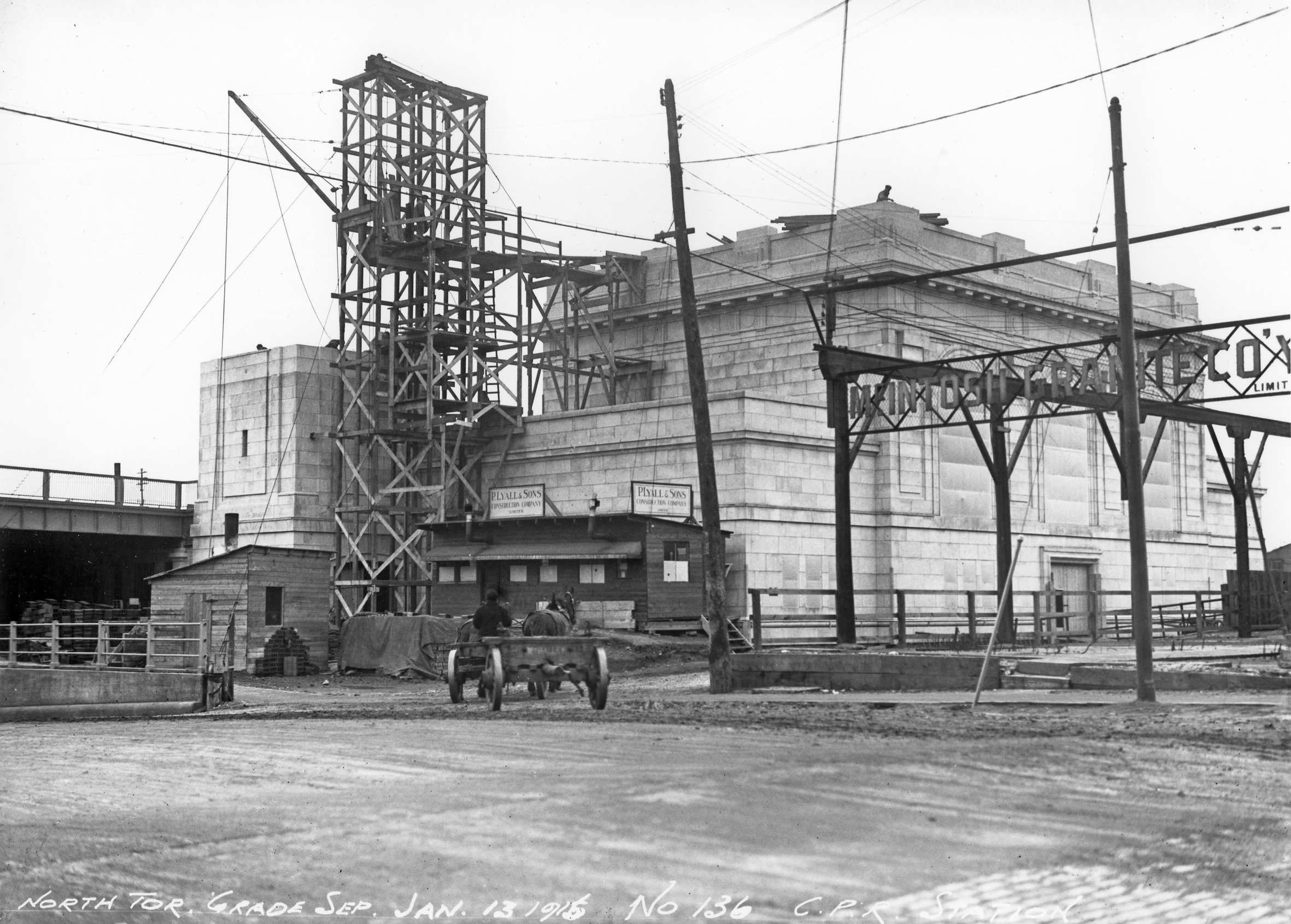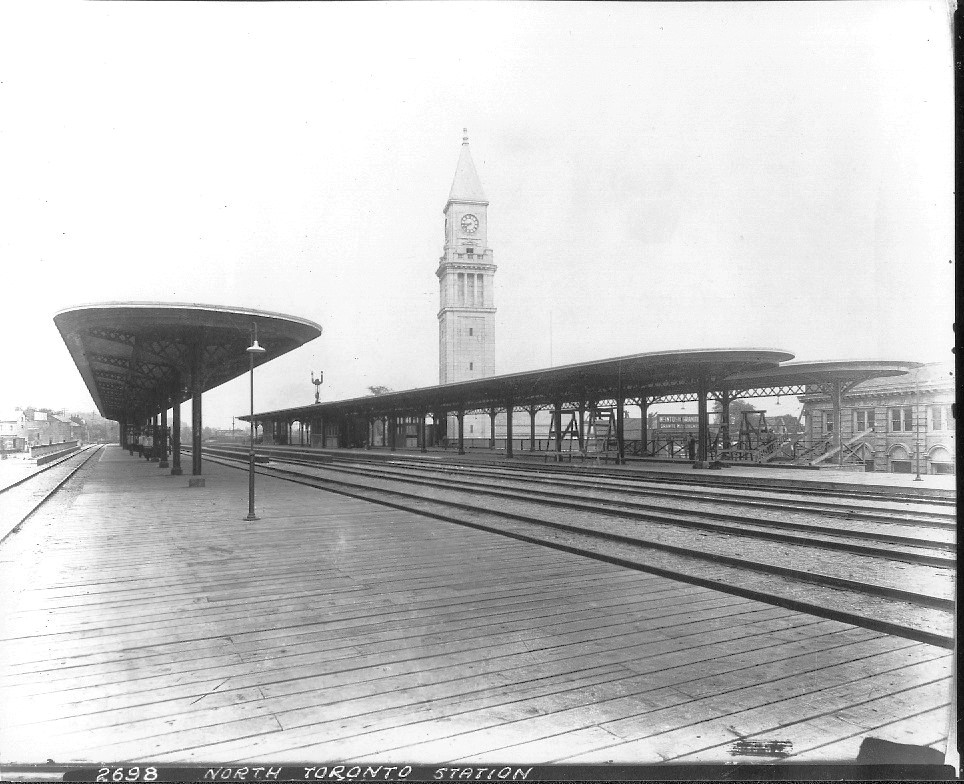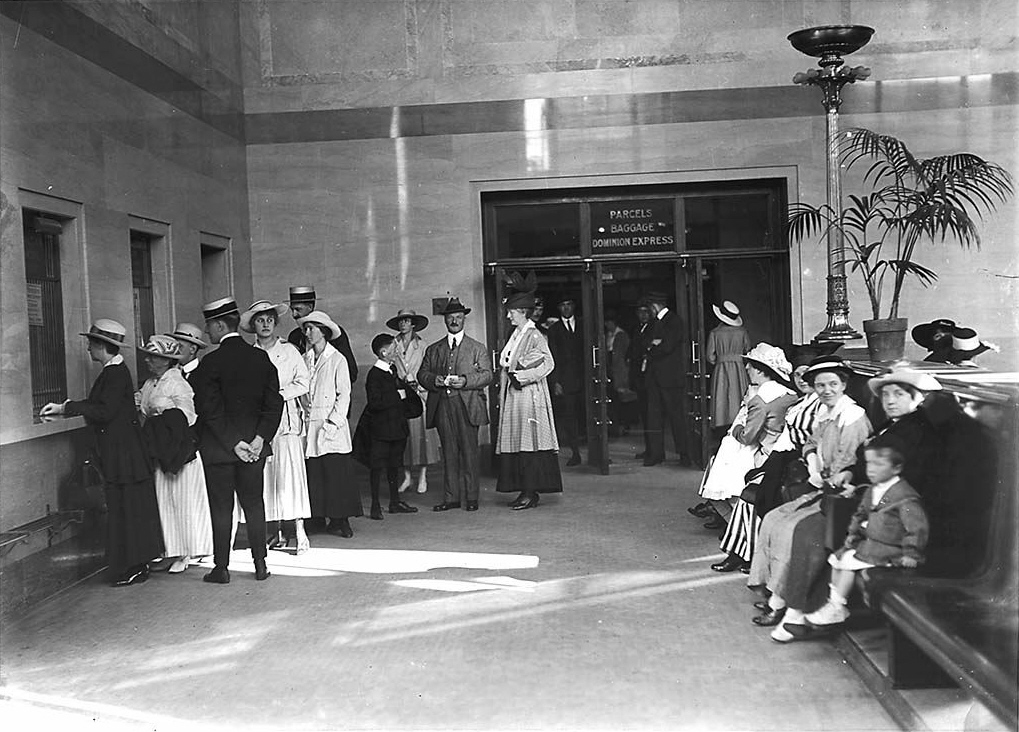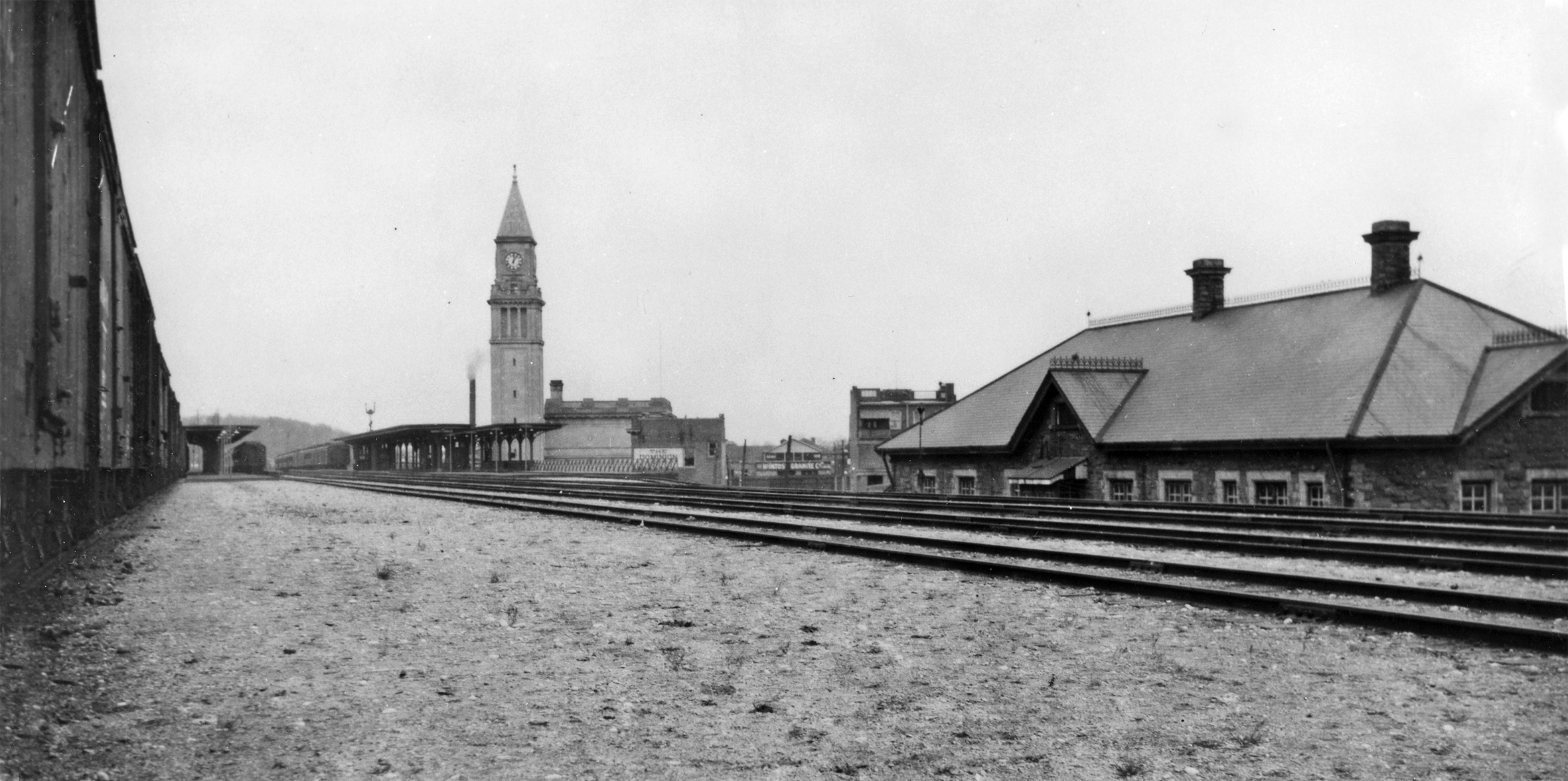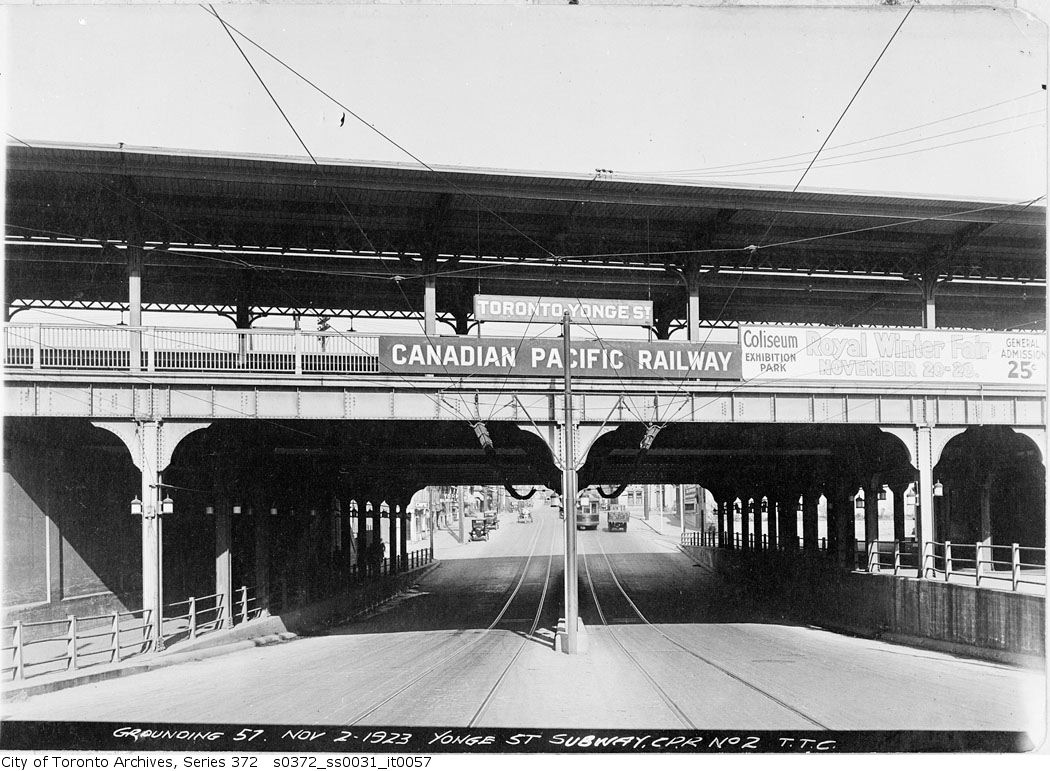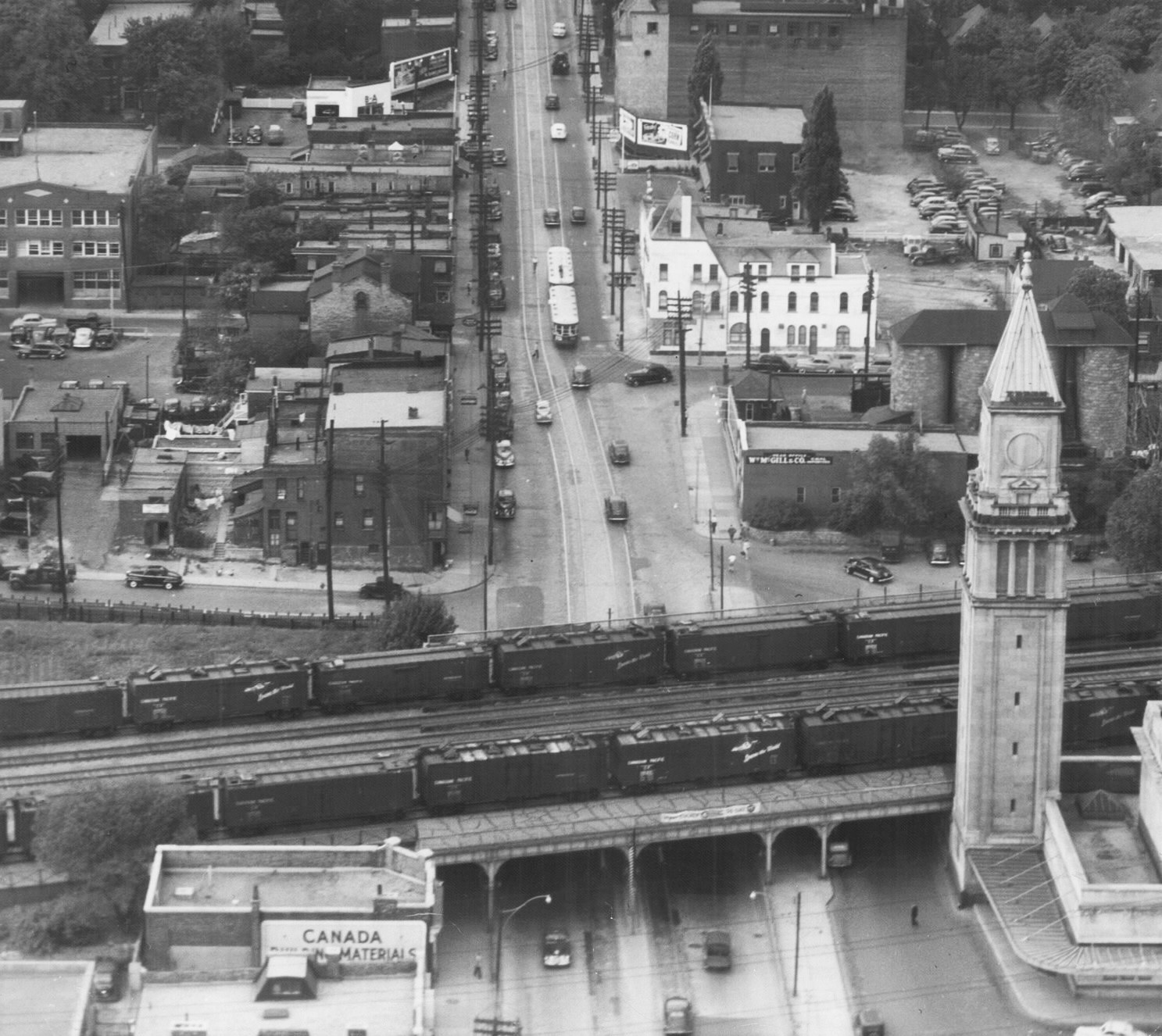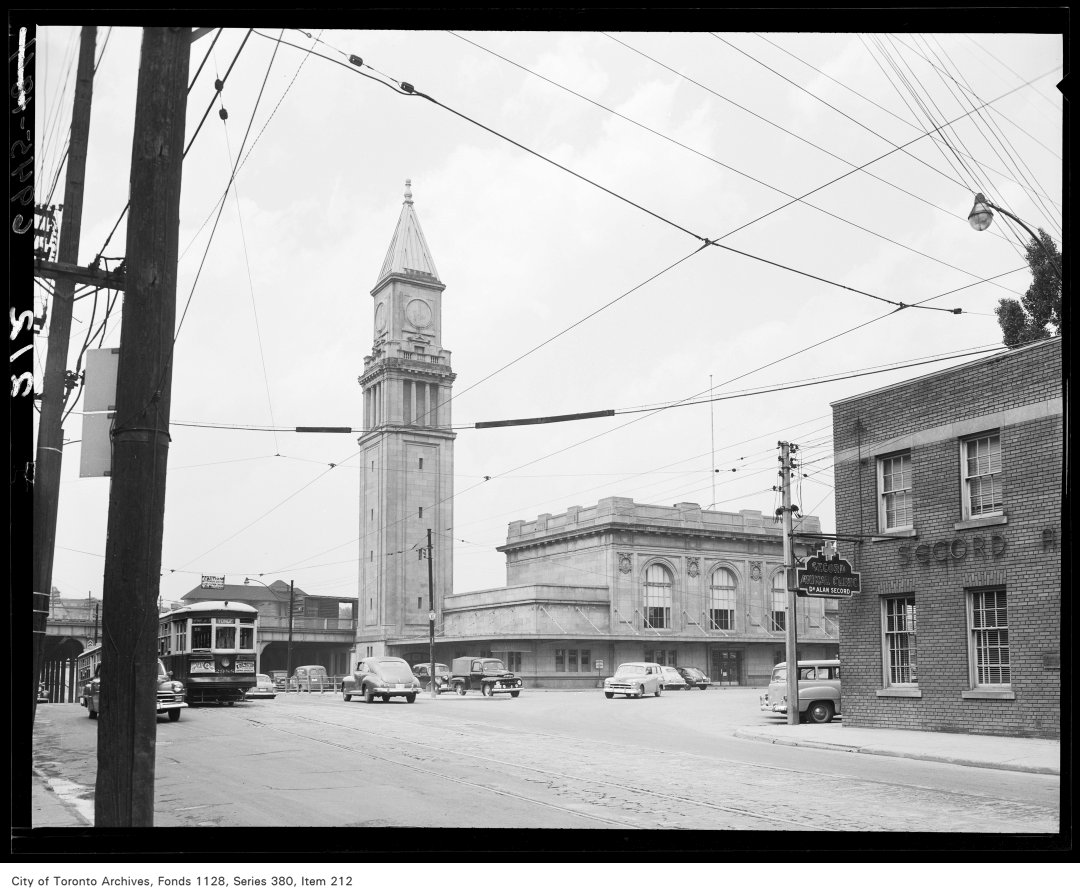Summary
In 1882, the Ontario & Quebec Railway secured a plot of land on the west side of Yonge Street. It was adjacent to their mainline which had recently begun construction. After the rails were laid this land became the site of a temporary station, originally to be called Yorkville but changed to North Toronto before opening. Passenger service between North Toronto and Parkdale began in September 1883, made possible by the Ontario & Quebec gaining control of the Credit Valley Railway and its facilities in Parkdale earlier the same year. The Ontario & Quebec itself existed solely on paper as a proxy of the much larger Canadian Pacific Railway. On March 31st, 1884, tenders were solicited for the construction of a permanent North Toronto Station at Cottingham Street ahead of the Ontario & Quebec’s completion. The new station opened that summer, and passenger service was inaugurated between Parkdale and Peterborough on June 28th. A sinkhole in Kaladar delayed the extension of service east of Norwood until August 11th, 1884, when twice daily service in both directions between Toronto and Montreal began. By 1899, a total of five trains stopped at North Toronto on a daily basis. A commuter service between North Toronto and Union Station via West Toronto was tried on two separate occasions, once in the 1890’s and again in the early 1900’s, but both failed due to low ridership.
The original North Toronto station was made inadequate by numerous factors by the early 20th century. Rail traffic, and especially through freight for points east and west, had increased beyond the capacity of the railway itself. Overcrowding at old Union Station had also motivated residents of downtown to take the Yonge streetcar to North Toronto Station instead. Plans to replace North Toronto station were announced as early as 1903, but no action would be taken in this regard until several years later. The railway line between North Toronto and West Toronto was double tracked in 1905, but this did little to increase capacity as it was surrounded by single track on either side for nearly a decade more. On February 13th, 1911, Canadian Pacific Railway vice-president David McNicoll presented the Toronto Board of Control with a list of improvements that his company had planned for its facilities in the city over the next several years. Among these improvements was a new North Toronto Station to coincide with a project to raise the railway bed above the surrounding roads. Around the same time, officials of Canadian Pacific had negotiated with the Canadian Northern Railway to establish a shared passenger terminal at North Toronto. While Canadian Pacific would construct and maintain ownership of the building, Canadian Northern would be a tenant with their own ticket office inside the station. Canadian Pacific intended to use the new station for only a handful of specific trains, while Canadian Northern expected to use it as their primary passenger terminal for the city and leave Union Station altogether.
Between 1912 and 1915, a three-mile segment of the railway was raised above the surrounding roads from Mount Pleasant Road to Dufferin Street. Work on a new station began in the spring of 1913 on the east side of Yonge Street while the old station remained open. The chosen design was a large Beaux-Arts structure with a prominent clocktower protruding upwards from its northwest corner, heavily influenced by the famous Campanile of St. Mark’s Square in Venice, Italy. Its stone walls quite closely resemble the current Union Station whose construction began around the same time. It was designed with a high volume of rail traffic in mind, having four platform tracks as well as two freight bypass tracks in the middle. Each platform had a butterfly roof canopy overhead to protect passengers from the elements. The corporate herald of the Ontario & Quebec Railway was carved in multiple places along the south-facing wall of the headhouse, as that company continued to exist on paper. A time capsule was placed in the station’s cornerstone in 1915 by the mayor of Toronto at the time, Tommy Church. Canadian Pacific officially opened the station on June 14th, 1916, although train service had already begun ten days earlier. The Canadian Northern Railway was unable to complete the necessary work to serve North Toronto Station themselves due to financial issues, and any hope of them doing so would evaporate with the company’s nationalization on August 1st, 1917. The old North Toronto station was briefly converted into a farmer’s market after the new station opened, but it was ultimately unsuccessful and the building was torn down during the 1920’s.
Canadian Pacific would now provide the only passenger service to North Toronto station, which now far exceeded the railway’s needs. Upon opening to passengers, the station saw a total of ten passenger trains arriving or departing per day, though a pair of these trains to and from Ottawa were shifted to Union Station two weeks later. By September 1929, on the eve of the Great Depression, the number of trains stopping at North Toronto per day had dropped to four. Compounding these factors was the opening of the current Union Station in 1927 and the gradual opening of its adjacent rail corridor between 1927 and 1930, making it a much more desirable terminal for Canadian Pacific. North Toronto Station was officially closed to passengers on September 28th, 1930, and the remaining passenger trains were subsequently relocated to Union Station. North Toronto technically “reopened” on two separate occasions: the first was for the arrival of King George VI and Queen Elizabeth I during their tour of Canada in 1939, the second was for the arrival of returning troops following the end of World War Two in 1945.
However, the station building remained in other uses by Canadian Pacific for numerous decades. First and foremost, the platforms were used to display new passenger rail equipment to the public. This had been the case even prior to the station’s closure, most notably with the display of the Trans-Canada Limited’s updated consist in 1929. Some of the last equipment to be displayed there would be a pair of new Budd Rail Diesel Cars in 1953, one year before a total of 53 such examples entered service on Canadian Pacific. The station’s platforms were gone and the track layout had been altered by this point, and the clock faces were removed from the tower shortly thereafter. The rail line it was situated on was then used exclusively as a freight corridor, particularly after the opening of Canadian Pacific’s Toronto Yard to the east in 1964. The only exception may have been the employee shuttles which used Budd RDCs between Agincourt and Lambton Yard. Despite objections from Canadian Pacific, North Toronto Station was protected from demolition under the Ontario Heritage Act in 1976 for its architecture and local landmark status.
The station was used for the sale of alcohol as early as 1931 when Brewers’ Retail, now called The Beer Store, opened a location at the north end of the building. The Liquor Control Board of Ontario set up shop in 1940, becoming the building’s sole occupant. The LCBO conducted a thorough restoration of the building between 2001 and 2003, which included returning the original clock faces to the tower. The 1915 time capsule was opened in 2015 and numerous historical items were found inside, after which a new time capsule was put in the same place. GO Transit has considered readapting it into an active train station since plans for a midtown line emerged in the 1980’s, but these efforts have yet to be acted upon. North Toronto Station is now considered one of the finest examples in Toronto of an adaptive re-use of a heritage building.
Condensed Station Info:
| Location: | Served By: | Current State: | Date Built: | Date Demolished: |
| Yonge Street and Scrivener Square | Canadian Pacific Railway (1884 – 1930) | Demolished (First) Repurposed (Second) | 1884 (First) 1916 (Second) | 1920’s (First) N/A (Second) |


